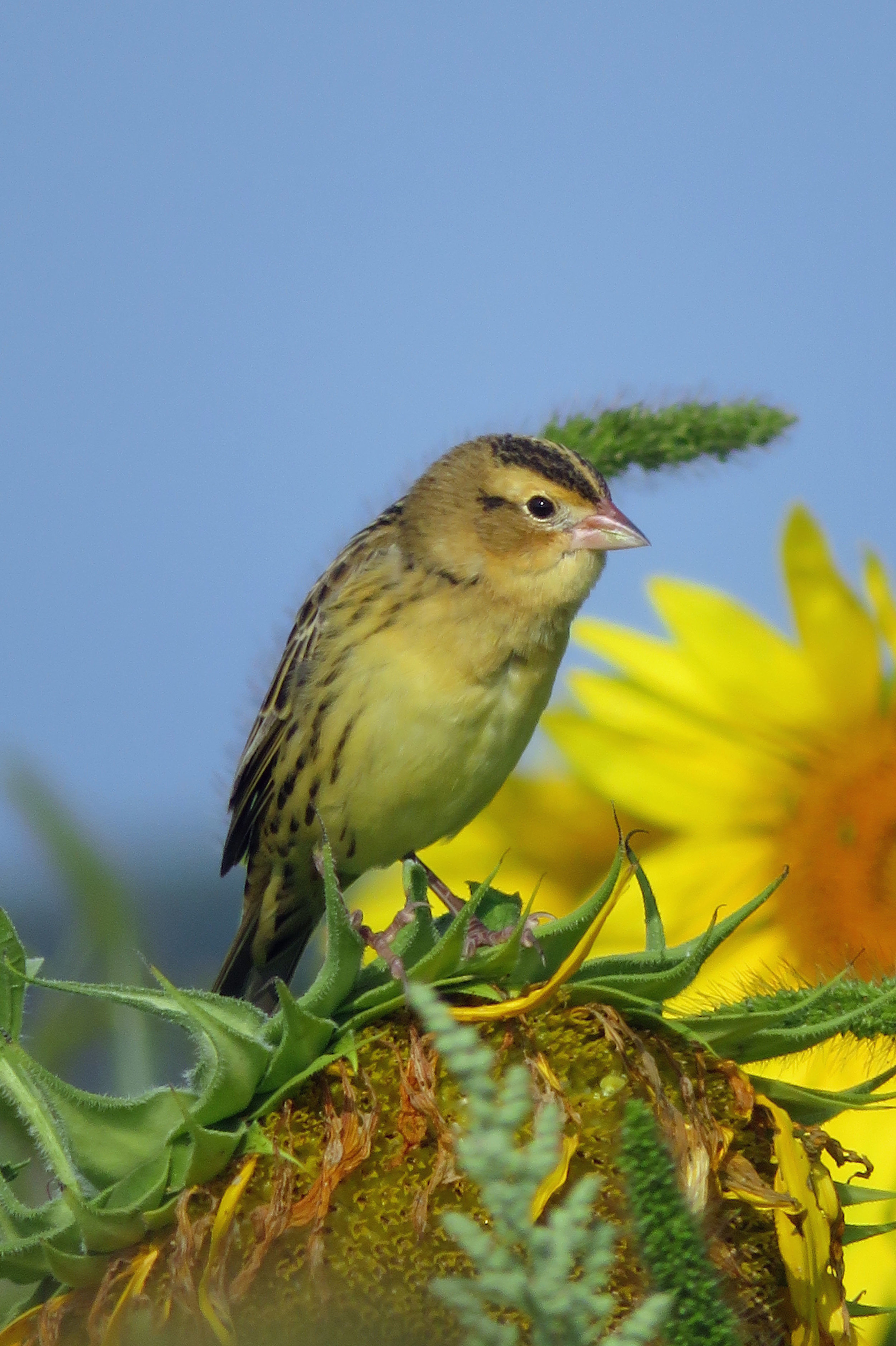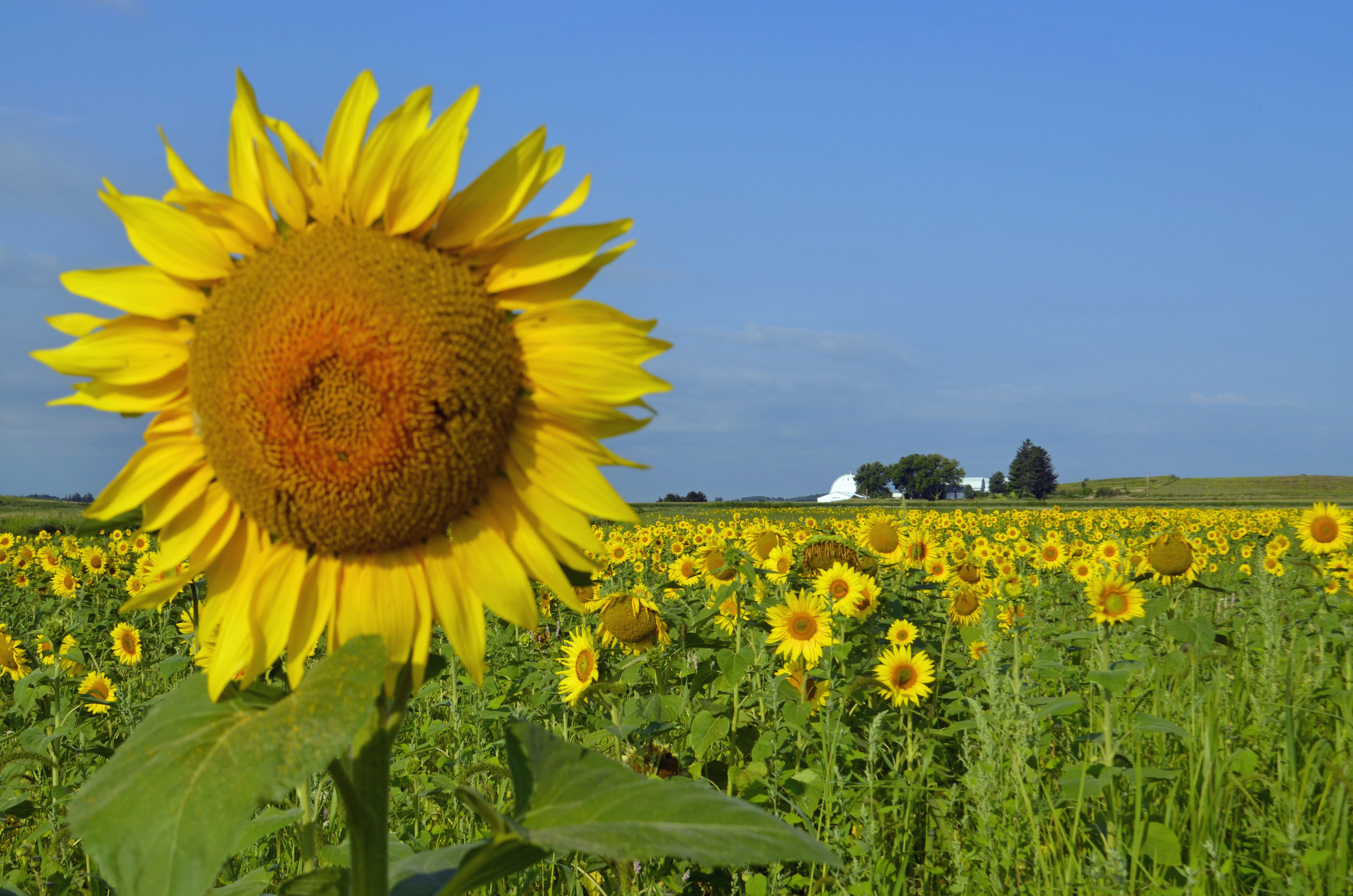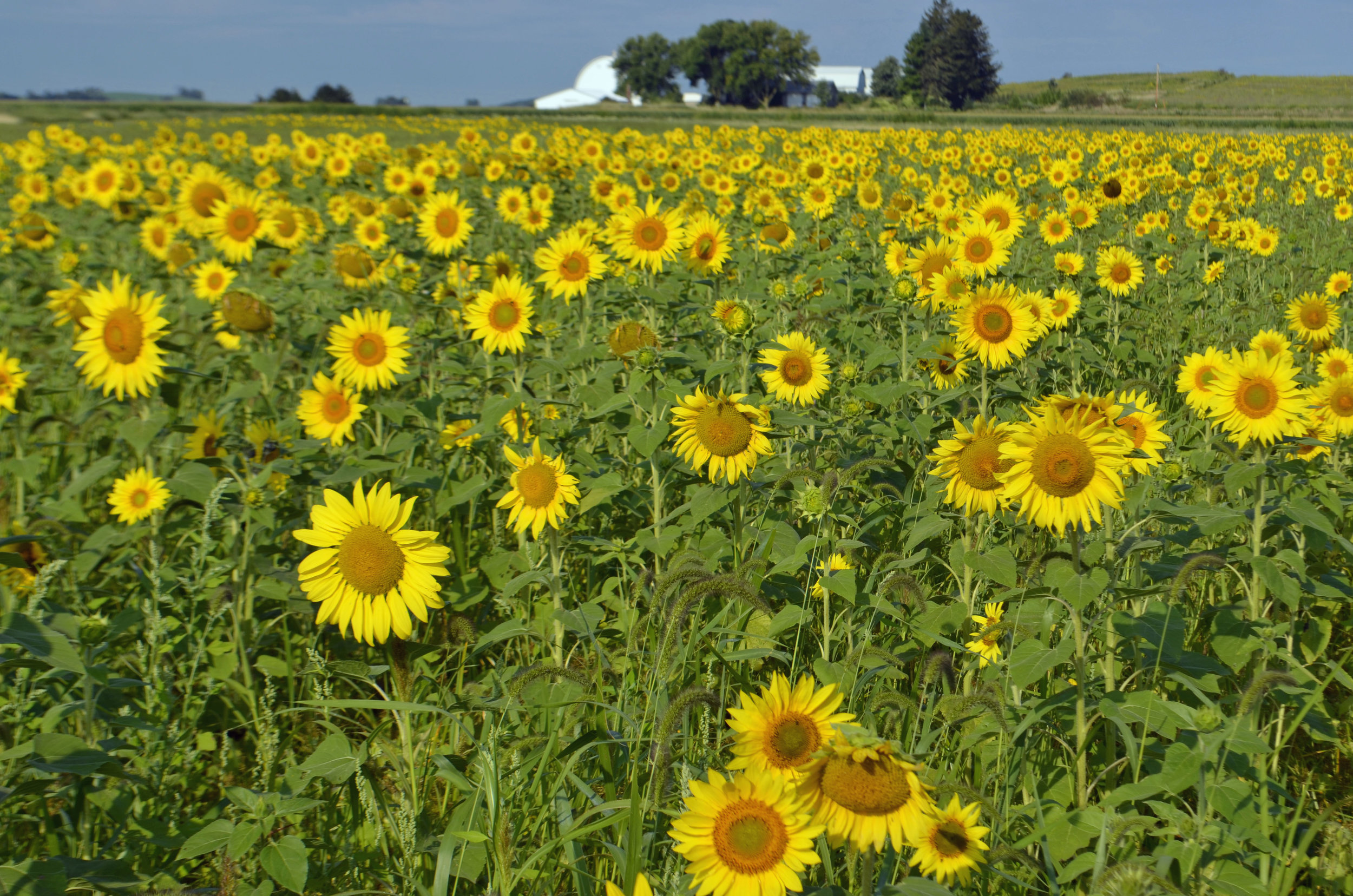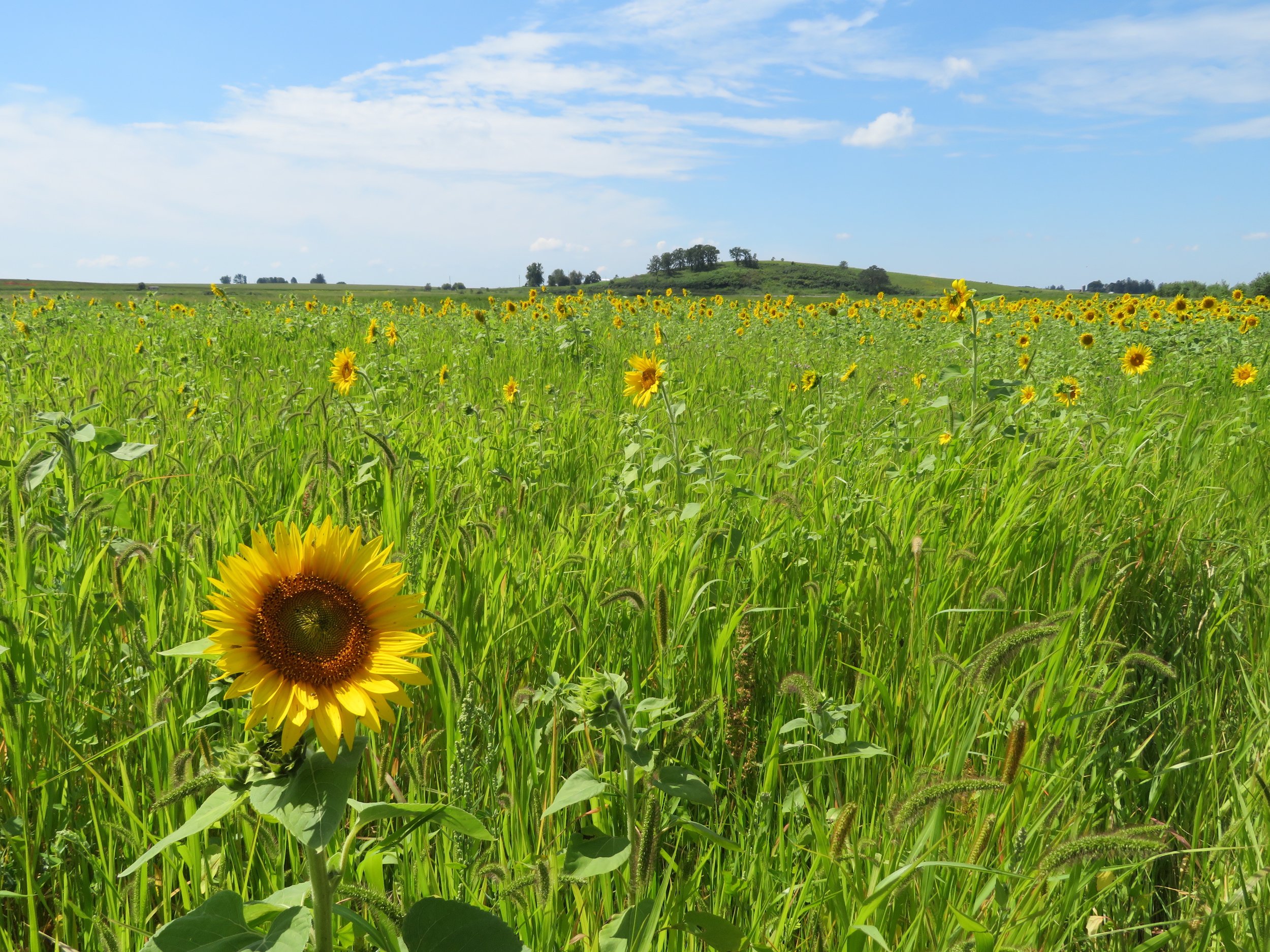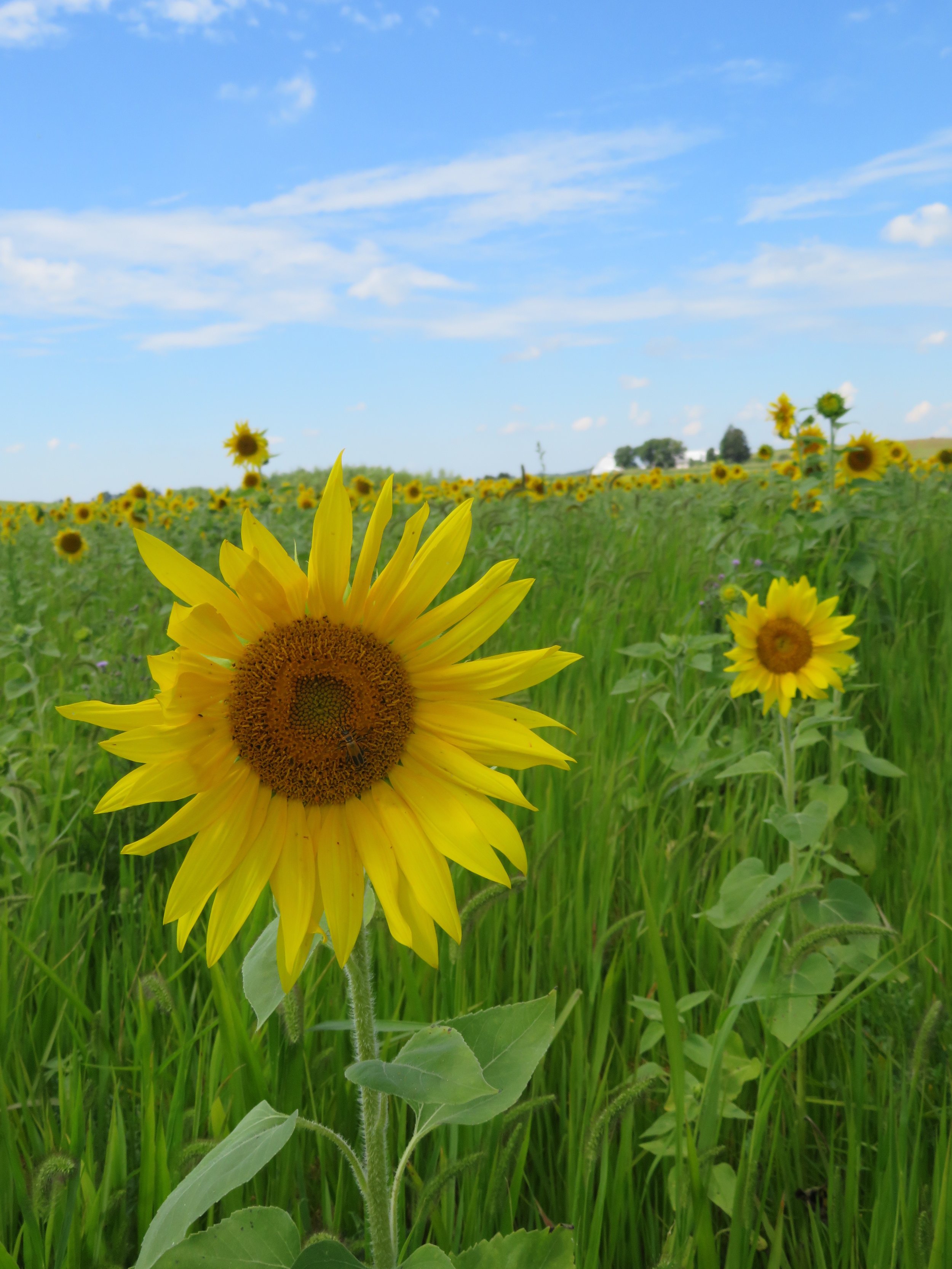Bobolinks feast at the Goose Pond Sanctuary food plot in August 2017. Photo by Maddie Dumas
The sunflowers in our food plot are almost at peak flowering (see below for more info about our food plot). Bumble bees are abundant and bobolinks were seen for the first time on August 16th. They will probably feed heavily getting ready for the long migration to central South America. Last year we hosted 60 to 100 bobolinks for three weeks beginning in late August.
Our sunflower patch does not compete with the Pope Farm Conservancy sunflowers but you are welcome to park on Kampen Road on the east end of the food plot (north of Goose Pond) and walk the mowed trail.
Click on the photos below to see more of the sunny scenary.
About the Goose Pond food plot
Food plots are valuable because they provide habitat for wildlife and can be a life saver for birds and mammals when snow and cold temperatures arrive. This valuable land use practice provides important ecological services by providing food and shelter for wildlife, erosion control and a source of clean water in the watershed. Today, winter on the prairie landscape in our area has little habitat to offer wildlife as crops of corn and soybeans have been cleanly harvested from farm fields.
In early June we planted a seven-acre food plot to provide food,(seed) for migrating and overwintering birds and mammals. The food plot is north of Goose Pond and south of Kampen Road. Dodge County Pheasants Forever generously provided $200 of sunflower, sorghum, and buckwheat seeds for the planting. This year the food plot also contains an abundance of foxtail seed which many bird feed on.
Last year Maia Persche with assistance of Jim Otto conducted weekly wildlife surveys in the food plot. Maia is preparing a paper on the count results for the Wisconsin Society for Ornithology's Passenger Pigeon. Maia and Jim found high counts of 700 American goldfinches, 500 morning doves, and 325 American tree sparrows in the Goose Pond food plot. Tree sparrow numbers ranged between 200 to 325 from mid November to mid April making the food plot an outstanding resource for wildlife who winter at Goose Pond Sanctuary.
Written by Mark Martin and Susan Foote-Martin, Goose Pond Sanctuary resident managers, and Maddie Dumas, Goose Pond Sanctuary land steward


